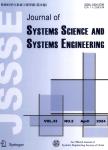The Sequential Pricing of Ride-Hailing System with Rental Service in the Context of Fleet Electrification
作者机构:Business SchoolSichuan UniversityChengdu610065China
出 版 物:《Journal of Systems Science and Systems Engineering》 (系统科学与系统工程学报(英文版))
年 卷 期:2024年第33卷第1期
页 面:77-105页
核心收录:
学科分类:02[经济学] 0202[经济学-应用经济学] 1201[管理学-管理科学与工程(可授管理学、工学学位)]
基 金:the National Natural Science Foundation of China(NSFC) under Grant No.71871151.The authors thank the anonymous referees and editors for their valuable comments that significantly contributed towards improving the quality of the paper.
主 题:Ride-hailing system car rental fleet electrification sequential pricing differential wage scheme
摘 要:Surging demand and reduced capacity in the ride-hailing industry have prompted numerous ride-hailing platforms to build their own car-rental services catering to drivers who do not possess private vehicles. However, the trade-off between the ride-hailing service and the car-rental service is an important issue that is still unclear in theory. Moreover, ride-hailing platforms are transitioning towards all-electric fleets in the context of Carbon Neutrality goals and government regulations. This paper considers a ride-hailing system comprising a monopolist ride-hailing platform, an electric vehicle (EV) rental firm, and a gasoline vehicle (GV) rental firm. Furthermore, we build a stylized model to study the sequential pricing of the system. The equilibrium outcomes show the significant impact of the ride-hailing platform’s decision to continue or withdraw offering EV rental services on EV and GV drivers’ net earnings, rental prices, and wages. The ride-hailing platform providing EV rental services increases EV drivers’ net earnings but decreases the GV driver wages and rental prices. However, the EV rental service offered by the ride-hailing platform does not necessarily lead to an increased total profit for the system. The improved profitability of the system by the ride-hailing platform providing EV rental services is contingent upon lower rider prices and higher fuel costs. The ride-hailing platform’s EV rental services provision also effectively fosters the ride-hailing fleet’s electrification. Furthermore, as the number of riders increases, the ride-hailing platform should reduce the commission rate for EV drivers to maintain competitiveness and profitability.



